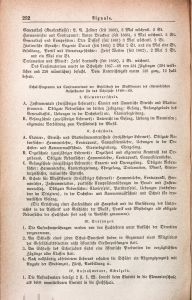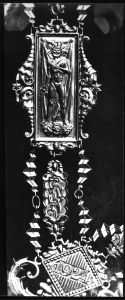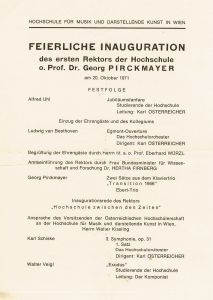50 years ago, on 21 January 1970, Austria’s parliament passed the Universities of the Arts Organisation Act (KHOG), which accorded university-level status to the Academies of Music and Performing Arts in Graz, Salzburg, and Vienna as well as to the Academy of Applied Arts Vienna as Hochschulen1.
19th-Century Roots
The conservatories that arose in Europe over the course of the 19th century were a heterogenous group of institutions, and opinions back then varied widely as to their responsibilities and missions. The discourse on this matter, which involved numerous personalities from the world of music, accompanied the histories of these institutions—with many ideas and thoughts foreshadowing future developments.
“A Hochschule for music should not just be a ‘high school’ for practical musicians and virtuosos, but much rather be—to use a term that we know—a ‘university’ for the musicians, which may seem an outlandish idea today, but is indeed something to which the arts are just as entitled as are the sciences.” (Musikalisches Wochenblatt, 4 Mar. 1870, 146.)
It’s in this visionary vein that, in Germany, Julius Alsleben advocated the establishment of Hochschulen in 1870, suggesting a University-like form of organisation—as state-run institutions headed by functionaries elected by the teaching staff. Alsleben expected of a Hochschule “the freest musical perspective on, recognition of, and teaching of all that can be justified academically (for only if a Hochschule in every way represents the pinnacle of art—including art of the present—does it deserve its name), but it must not become a hotbed of tendentious passions.” (Musikalisches Wochenblatt, 22 Apr. 1870, 258).

With the opening of the Musikverein building by Vienna’s Gesellschaft der Musikfreunde at the beginning of 1870, its conservatory—today’s mdw—finally enjoyed suitable spaces. Shortly prior to that, the Conservatory had been relaunched organisationally with its Grundverfassungs-Statut of 1869, which stipulated “thorough instruction in all branches of music as an art and as a science”. Remarkably, the Conservatory’s Schul-Programm for 1868/69 had foreseen two divisions: an Elementarschule and a Hochschule.
At that time, 100 years before the KHOG took effect, this was more wishful thinking than reality—but even so, despite all financial difficulties that running this conservatory entailed for its private sponsor, it had at least become an aspiration.
A Fleeting Dream Come True: The Fach-Hochschule of 1924–1931
The 1909 takeover of the Conservatory by the Austrian state and its simultaneous transformation into an Akademie of Music and Performing Arts entailed not only deep-reaching organisational changes but also a revival of the discussion as to whether the institution should be converted into a university-level Hochschule. And a decade later, in the wake of the Habsburg Monarchy’s collapse, the mdw was gripped by the general spirit of democratisation—with an increasing number of voices advocating more “Hochschule-like” administration, by which they meant increased involvement of the teaching staff in decision-making.
1924 saw the establishment of a “Fach-Hochschule of Music and Performing Arts”. This, however, did not entail actual Hochschule status; instead, it simply represented the removal and transfer of the more advanced levels from the Akademie to an additional, newly founded institution. The first rector of the Fach-Hochschule, Joseph Marx, was proud of the newfound academic freedom and democratic self-determination enjoyed by its teaching staff. But the structural weaknesses of the overall construct—two institutions with differing missions united beneath the same roof and quite closely interwoven in terms of personnel and organisation—soon became apparent.
Unclear structures and the resulting conflicts over authority as well as political and ideological turf wars eventually led to deep divisions within this institutional tandem—which set the stage for the Ministry of Education’s steadily increasing exertion of political influence, which in turn led to a continual loss of autonomy by both institutions. And within a few short years, the dream of becoming a true Hochschule had died: 1931 saw the Fach-Hochschule dissolved and once again made part of the Akademie.

Becoming a Hochschule, 1970
Following a relatively brief intermezzo as a National Socialist Reichshochschule (1941–1945), the mdw was re-established in the post-war period as a (State) Akademie run by an appointed president. And over the course of time, the institution’s status became an increasingly urgent question in everyday academic life—above all because it was providing artistic training up to the highest possible level. This meant that the Akademie did, in fact, possess the character of a Hochschule—and it proceeded to back up this claim by establishing research departments and study programmes on special topics.
Wholly apart from the inequality of Akademien and Hochschulen, there was also a measure of legal uncertainty, since the existing laws that governed university studies did treat the Akademien like Hochschulen in certain respects (as seen in the Student Union Act and the Student Support Act). So in the 1960s, with an eye to ameliorating this situation, certain Hochschule-like rights were granted—such as the rector’s right to wear an official chain—and a working group was charged with developing a law on “Hochschulen for the arts”.

The resulting draft bill was introduced in the National Council (Austria’s parliament) in the autumn of 1969, and in 1970, the Universities of the Arts Organisation Act (KHOG) finally became law (BGBl. [Federal Law Gazette] 54/1970). The central principle of the KHOG was the legal equality of the arts and the sciences. And at the former Akademien of the arts, now known as Kunsthochschulen, self-governance was introduced. Altogether, the KHOG brought with it an increased degree of democratisation that was reflected most strongly in the involvement of students and non-professorial teaching staff in decision-making processes. And finally, 1971 saw the ministerially appointed presidents replaced by rectors elected within the Hochschulen themselves—with Georg Pirckmayer assuming the office of rector at the mdw.
Book tip
In 2021, the archives of the University of Music and Performing Arts Graz, Mozarteum University Salzburg, and the mdw will be publishing a volume to mark the Universities of the Arts Organisation Act’s 50th anniversary.

